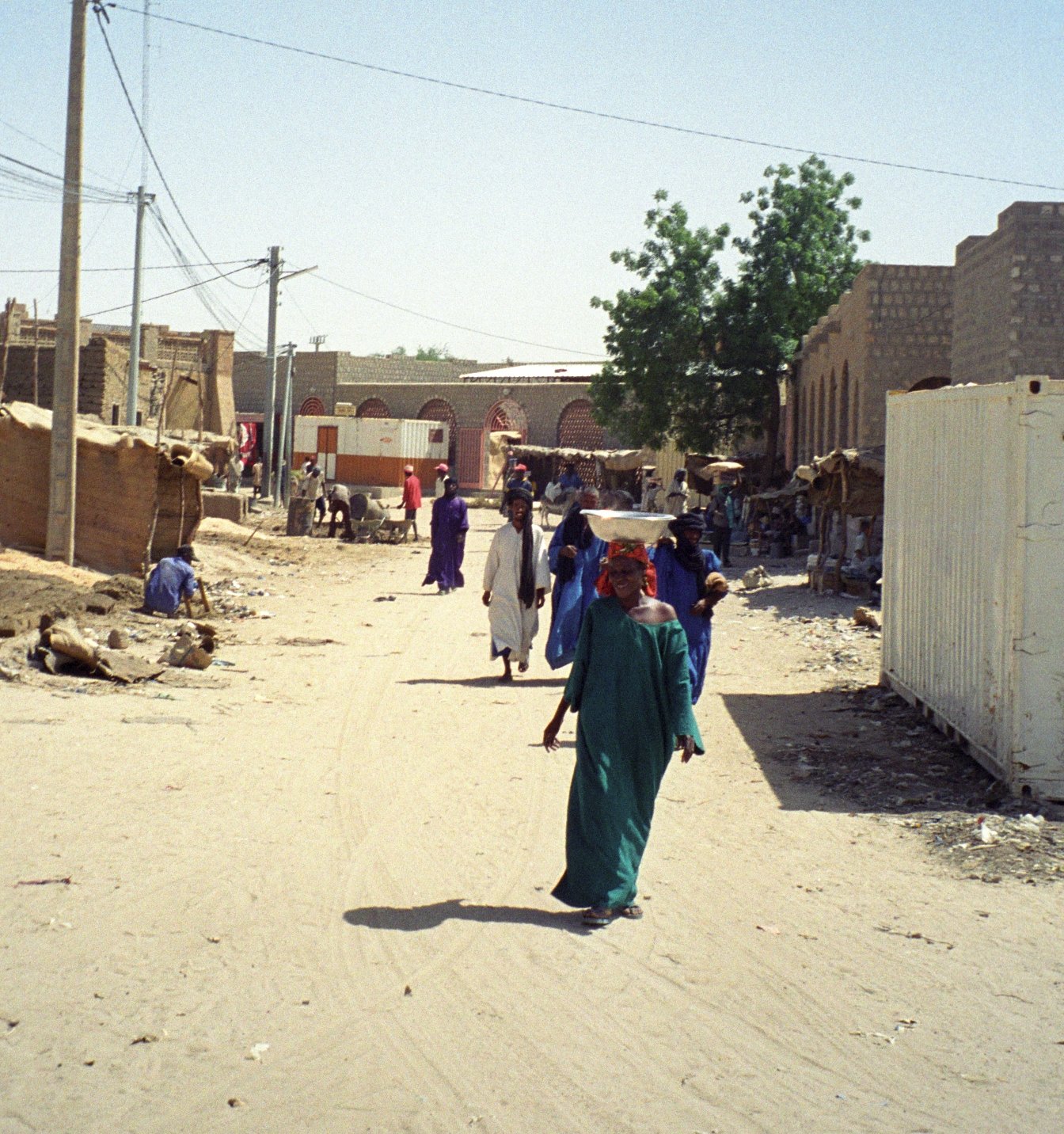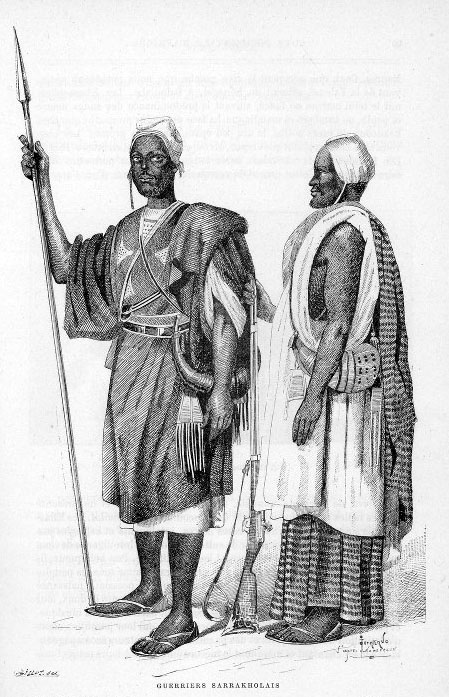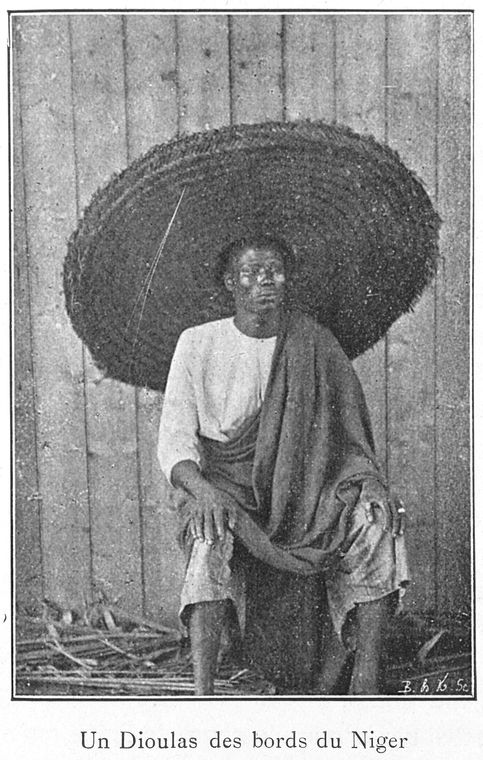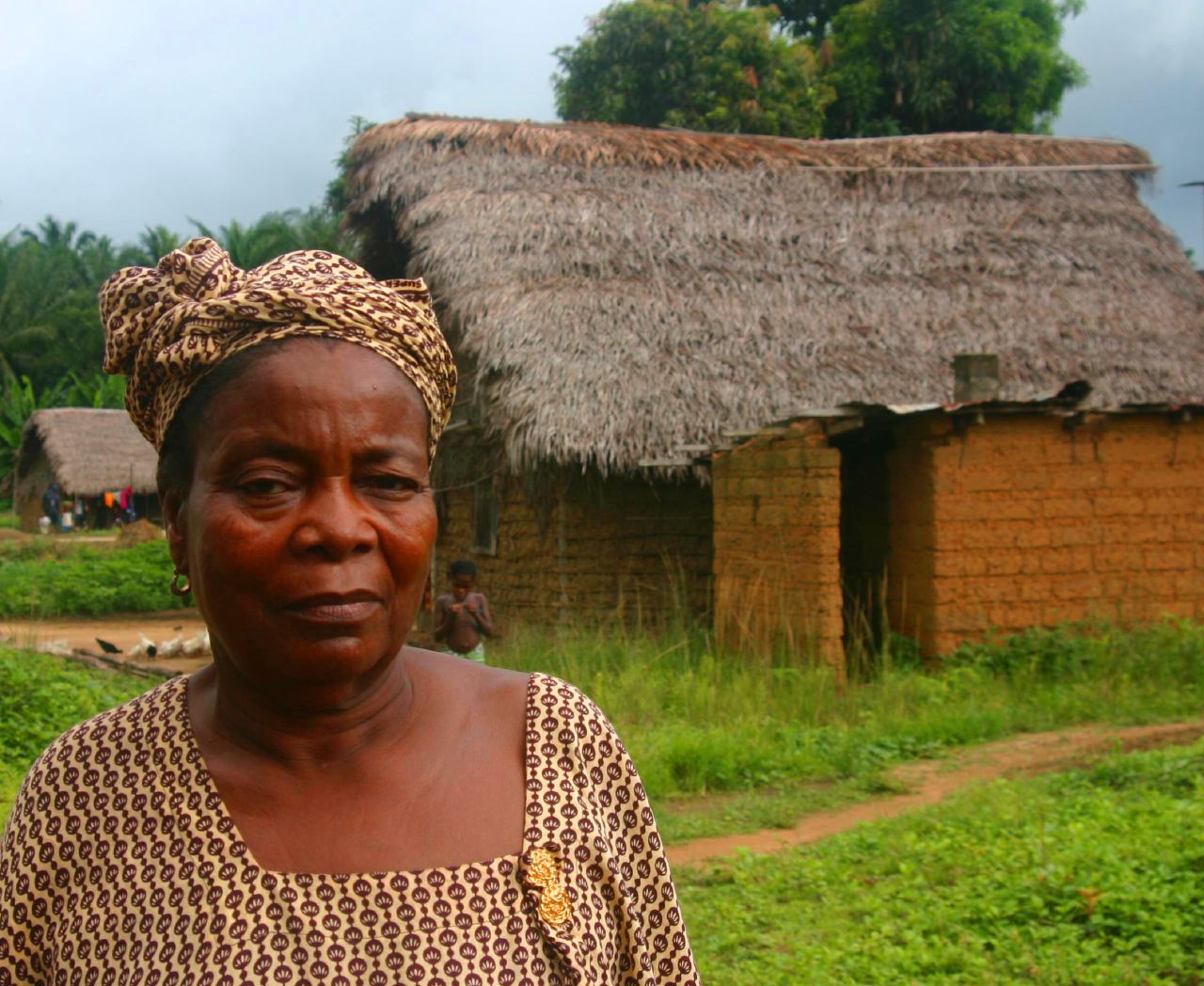|
Mane People
The Manes (so called by the Portuguese) or Mani or Manneh were invaders who attacked the western coast of Africa from the east, beginning during the first half of the sixteenth century. Walter Rodney has suggested that "the Mane invaders of Sierra Leone comprised two principal elements — a ruling ''élite'' originating in the southern section of the Mande world of the Western Sudan, and numerical forces drawn from the area around Cape Mount"; the first half of the sixteenth century would have taken Mande clans to the Liberian coast "from the region around Beyla and perhaps even from the hinterland of modern Ghana," followed by more incursions during the third quarter of the century, bringing both exploitation of the local peoples and improved military techniques and iron and cloth manufacture. "They also profoundly influenced religious and social patterns, particularly with respect to the secret societies of the area." Yves Person identified the early Mane leaders with the Kamara ... [...More Info...] [...Related Items...] OR: [Wikipedia] [Google] [Baidu] |
Mandé Peoples
The Mandé peoples are ethnic groups who are speakers of Mande languages. Various Mandé speaking ethnic groups are found particularly toward the west of West Africa. The Mandé Speaking languages are divided into two primary groups: East Mandé and West Mandé. The Mandinka or Manding (Malinke, Bambara and Dioula), a western branch of the Mandé, are credited with the founding of the largest ancient West African empires. Other large Mandé speaking ethnicities include the Soninke and Susu as well as smaller ethnic groups such as the Ligbi, Vai, and Bissa. Mandé speaking people inhabit various environments, from coastal rainforests to the sparse Sahel. They have a wide range of cuisines, cultures, and beliefs, and are organized mainly by their language group. Today they are predominantly Muslim and follow a caste system. Islam has played a central role in identifying the Mandé speaking people who originate and live in the Sahel regions the Mandinka and Soninke who ha ... [...More Info...] [...Related Items...] OR: [Wikipedia] [Google] [Baidu] |
Susu People
The Susu people are a Mande-speaking ethnic group living primarily in Guinea and Northwestern Sierra Leone, particularly in Kambia District.Susu people Encyclopædia Britannica Influential in Guinea, smaller communities of Susu people are also found in the neighboring and . The Susu are a patrilineal society, predominantly Muslim, who favor endogamous cross-cousin marriages with polygynous households. They have a caste system like all Manding-speaking peoples of West Africa. The artisans such as smiths, carpenters, musicians, jewelers, a ... [...More Info...] [...Related Items...] OR: [Wikipedia] [Google] [Baidu] |
Soninke Wangara
The Wangara (also known as Wakore, Wankori, Ouankri, Wangarawa, Dyula, Jula, Jakhanke, Jalonke) are a subgroup of the Soninke who later became assimilated (at varying degrees) merchant classes that specialized in both Trans Saharan and Secret Trade of Gold Dust. Their diaspora operated all throughout West Africa Sahel-Sudan. Fostering regionally organized trade networks and Architecture projects. But based in the many Sahelian and Niger- Volta- Sene-Gambia river city-states. Particularly Dia, Timbuktu, Agadez, Kano, Gao, Koumbi Saleh, Guidimaka, Salaga, Kong, Bussa, Bissa, Kankan, Jallon, Djenné as well as Bambouk, Bure, Lobi, and (to a lesser degree) Bono State goldfields and Borgu. They also were practicing Muslims with a clerical social class (Karamogo), Timbuktu Alumni political advisors, Sufi Mystic healers and individual leaders (Marabout). Living by a philosophy of merchantile pacifism called the Suwarian Tradition. Teaching peaceful coexistence with non-Muslim ... [...More Info...] [...Related Items...] OR: [Wikipedia] [Google] [Baidu] |
Soninke People
The Soninke people are a West African Mande-speaking ethnic group found in Mali, Fouta Djallon, southern Mauritania, eastern Senegal, Guinea and The Gambia. They speak the Soninke language, also called the Serakhulle or Azer language, which is one of the Mande languages. Soninke people were the founders of the ancient empire of Ghana or Wagadou c. 300–1240 CE, Subgroups of Soninke include the Maraka and Wangara. When the Ghana empire was destroyed, the resulting diaspora brought Soninkes to Mali, Mauritania, Senegal, Gambia, Burkina Faso, Côte d'Ivoire, Guinée-Conakry, modern-day Republic of Ghana, and Guinea-Bissau where some of this trading diaspora was called Wangara. Predominantly Muslims, the Soninke were one of the early ethnic groups from West Africa to convert to Islam in about the 10th century. The contemporary population of Soninke people is estimated to be over 2 million. The cultural practices of Soninke people are similar to the Mandé peoples, and those of ... [...More Info...] [...Related Items...] OR: [Wikipedia] [Google] [Baidu] |
Dyula People
The Dyula (Dioula or Juula) are a Mande ethnic group inhabiting several West African countries, including Mali, Cote d'Ivoire, Ghana, and Burkina Faso. Characterized as a highly successful merchant caste, ''Dyula'' migrants began establishing trading communities across the region in the fourteenth century. Since business was often conducted under non-Muslim rulers, the ''Dyula'' developed a set of theological principles for Muslim minorities in non-Muslim societies. Their unique contribution of long-distance commerce, Islamic scholarship and religious tolerance were significant factors in the peaceful expansion of Islam in West Africa. Historical background The Mandé embraced Islam during the thirteenth century following introduction to the faith through contact with the North African traders. By the 14th century, the Malian empire (c.1230-1600) had reached its apogee, acquiring a considerable reputation for the Islamic rulings of its court and the pilgrimages of several emp ... [...More Info...] [...Related Items...] OR: [Wikipedia] [Google] [Baidu] |
Ivory Coast
Ivory Coast, also known as Côte d'Ivoire, officially the Republic of Côte d'Ivoire, is a country on the southern coast of West Africa. Its capital is Yamoussoukro, in the centre of the country, while its largest city and economic centre is the port city of Abidjan. It borders Guinea to the northwest, Liberia to the west, Mali to the northwest, Burkina Faso to the northeast, Ghana to the east, and the Gulf of Guinea (Atlantic Ocean) to the south. Its official language is French, and indigenous languages are also widely used, including Bété, Baoulé, Dioula, Dan, Anyin, and Cebaara Senufo. In total, there are around 78 different languages spoken in Ivory Coast. The country has a religiously diverse population, including numerous followers of Christianity, Islam, and indigenous faiths. Before its colonization by Europeans, Ivory Coast was home to several states, including Gyaaman, the Kong Empire, and Baoulé. The area became a protectorate of France in 1843 ... [...More Info...] [...Related Items...] OR: [Wikipedia] [Google] [Baidu] |
Kru People
The Kru, Kroo, Krou or Kuru are a West African ethnic group who are indigenous to western Ivory Coast and eastern Liberia. They migrated and settled along various points of the West African coast, notably Freetown, Sierra Leone, but also the Ivorian and Nigerian coasts. The Kru people are a large ethnic group that is made up of several sub-ethnic groups in Liberia and Ivory Coast. These tribes include Bété, Bassa, Krumen, Guéré, Grebo, Klao, Krahn people and, Jabo people. The kru people were more valuable as traders and sailors on slave ships than as slave labor. To ensure their status as “freemen,” they initiated the practice of tattooing their foreheads and the bridge of their nose with indigo dye to distinguish them from slave labor. Part of the Grebo people were called Krumen and hired as free sailors on European ships, initially engaged in the slave trade, and then when that ended in the coastal trade in goods. The Krumen were famous for their skills in naviga ... [...More Info...] [...Related Items...] OR: [Wikipedia] [Google] [Baidu] |
Temne People
The Temne, also called Atemne, Témené, Temné, Téminè, Temeni, Thaimne, Themne, Thimni, Timené, Timné, Timmani, or Timni, are a West African ethnic group, They are predominantly found in the Northern Province of Sierra Leone.Temne people Encyclopædia Britannica Some Temne are also found in . The Temne constitute the largest in , at 35.5% of the total population, which is slightly bigger than the |
Loko People
The Loko (IPA: Lɔkɔ) are one of the indigenous ethnic groups in Sierra Leone. Landogo is used as an endonym for the people and language, but other groups refer to them as Loko. They speak a Southwestern Mande language that is also called Loko. The majority of the Loko people live in the Northern Province of the country, particularly in Bombali District , and around the capital city of Freetown in communities such as Regent. Important regional towns include Tambiama, Kalangba, and Gbendembu, though other groups such as the Mandingo people of Sierra Leone, Mandingo, Fula and Temne peoples live there too. The Loko belong to the larger group of Mande peoples who live throughout West Africa. The Loko are mostly farmers and hunters. Loko believe that most humanistic and scientific power is passed down through the secret societies A secret society is a club or an organization whose activities, events, inner functioning, or membership are concealed. The society may or may ... [...More Info...] [...Related Items...] OR: [Wikipedia] [Google] [Baidu] |
Mende People
The Mende are one of the two largest ethnic groups in Sierra Leone; their neighbours, the Temne people, constitute the largest ethnic group at 35.5% of the total population, which is slightly larger than the Mende at 31.2%. The Mende are predominantly found in the Southern Province and the Eastern Province. The Mende are mostly farmers and hunters. Some of the major cities with significant Mende populations include Bo, Kenema, Kailahun, and Moyamba. Like a majority of African nations, Sierra Leone's political parties are often tied to specific ethnic groups and have been dominated by the Mende, on the one hand, and the Temne and their long-time political allies, the Limba people (Sierra Leone), Limba, on the other. The Mende are known to typically support the Sierra Leone People's Party (SLPP), while the Temnes and Limbas are associated with the All People's Congress party (APC). History Regional warfare throughout the 19th century led to the capture and sale of many M ... [...More Info...] [...Related Items...] OR: [Wikipedia] [Google] [Baidu] |
Liberia
Liberia (), officially the Republic of Liberia, is a country on the West African coast. It is bordered by Sierra Leone to Liberia–Sierra Leone border, its northwest, Guinea to its north, Ivory Coast to its east, and the Atlantic Ocean to its south and southwest. It has a population of around 5 million and covers an area of . English is the official language, but over 20 indigenous languages are spoken, reflecting the country's ethnic and cultural diversity. The country's capital and largest city is Monrovia. Liberia began in the early 19th century as a project of the American Colonization Society (ACS), which believed black people would face better chances for freedom and prosperity in Africa than in the United States. Between 1822 and the outbreak of the American Civil War in 1861, more than 15,000 freed and free-born black people who faced social and legal oppression in the U.S., along with 3,198 Afro-Caribbeans, relocated to Liberia. Gradually developing an Americo- ... [...More Info...] [...Related Items...] OR: [Wikipedia] [Google] [Baidu] |
Ghana
Ghana (; tw, Gaana, ee, Gana), officially the Republic of Ghana, is a country in West Africa. It abuts the Gulf of Guinea and the Atlantic Ocean to the south, sharing borders with Ivory Coast in the west, Burkina Faso in the north, and Togo in the east.Jackson, John G. (2001) ''Introduction to African Civilizations'', Citadel Press, p. 201, . Ghana covers an area of , spanning diverse biomes that range from coastal savannas to tropical rainforests. With nearly 31 million inhabitants (according to 2021 census), Ghana is the List of African countries by population, second-most populous country in West Africa, after Nigeria. The capital and List of cities in Ghana, largest city is Accra; other major cities are Kumasi, Tamale, Ghana, Tamale, and Sekondi-Takoradi. The first permanent state in present-day Ghana was the Bono state of the 11th century. Numerous kingdoms and empires emerged over the centuries, of which the most powerful were the Kingdom of Dagbon in the north and ... [...More Info...] [...Related Items...] OR: [Wikipedia] [Google] [Baidu] |





